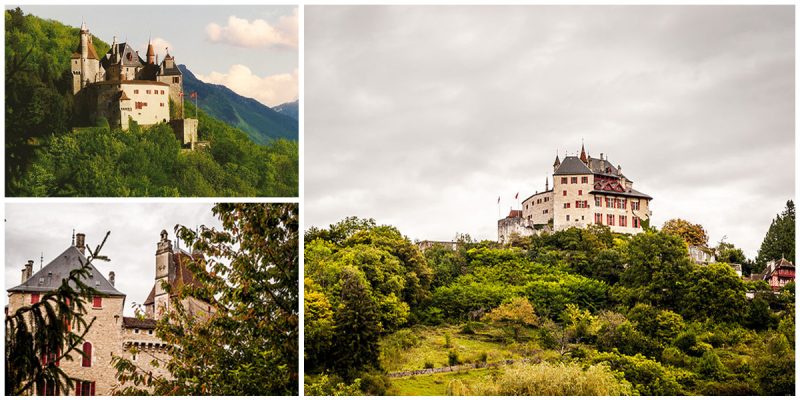Located in the commune of Menthon-Saint-Bernard, 12 kilometers south of Annecy in the Haute-Savoie department in France, this medieval castle has had a long history.
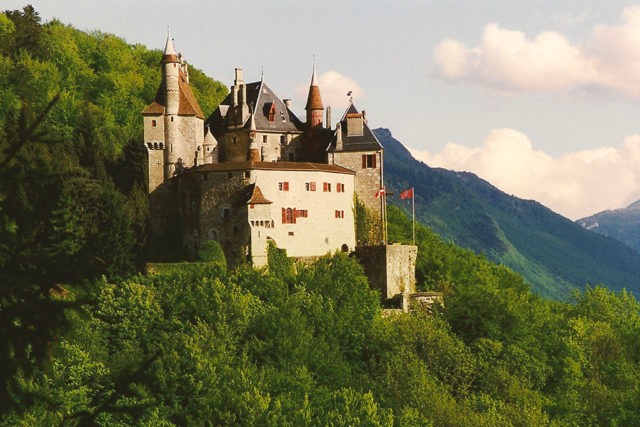
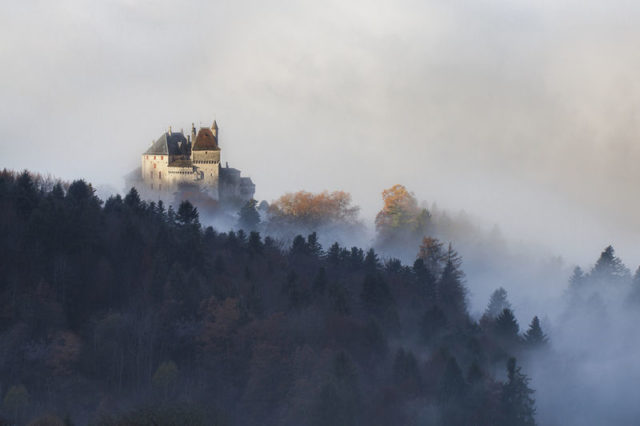
The first fortress at the site was erected in the 10th century, around 923. It was originally a simple wooden guard post, built on a promontory dominating the ancient Roman road and Lake Annecy.
It is known with certainty that in 1190 there was a lord of Menthon, but the family must have lived in the place well before that since tradition has it that Saint-Bernard de Menthon was born there in 1008.
Inhabited by the same family since the 11th century and built between the 11th and 19th centuries, it still contains its rich variety of furniture and period decoration.
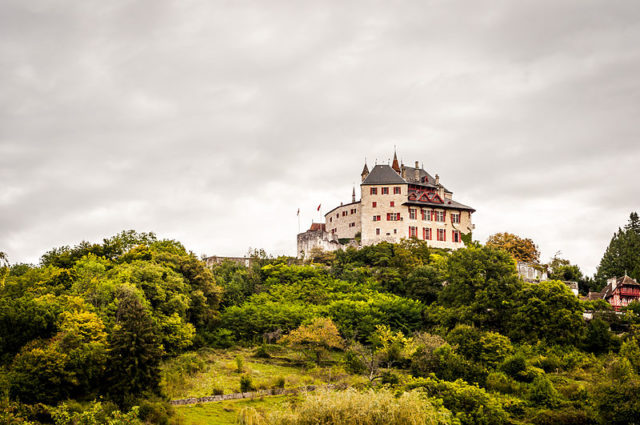
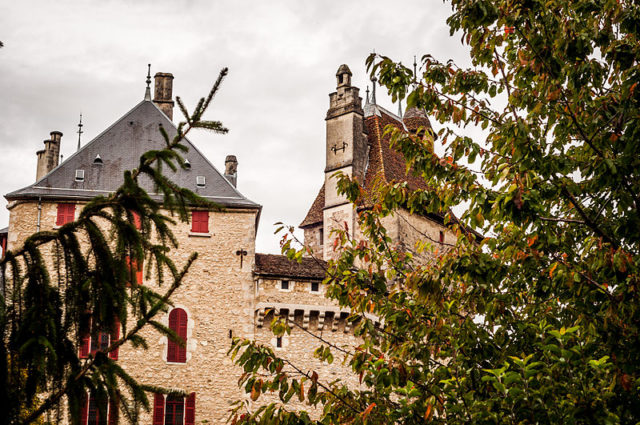
The origin of the family is uncertain, but they came from Burgundy and acquired a degree of feudal power. After their arrival, they constructed the three big square towers: the lake tower, the keep, and the armory tower.
Linked by sentry walks, they shelter a great courtyard where the villagers found refuge during troubled times.
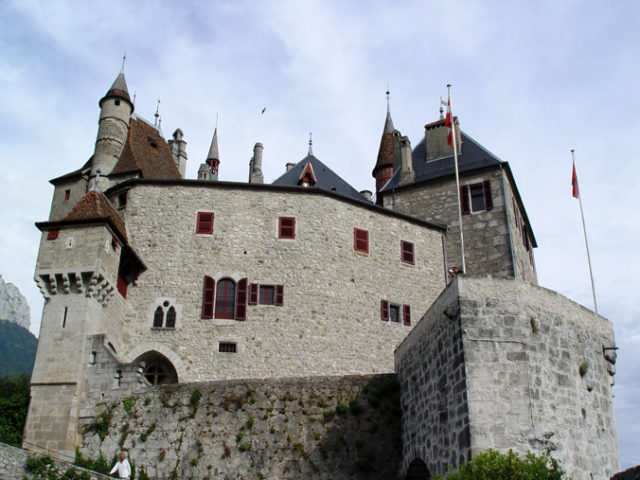
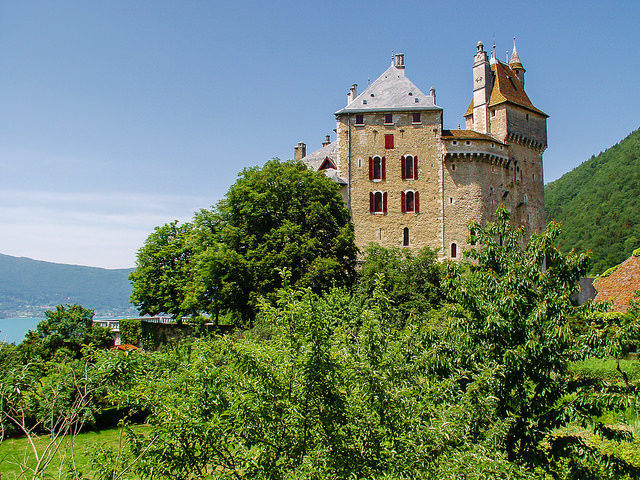
Well protected from public gaze behind their high solid walls, the inner rooms have changed very little.
They are valuable evidence of what a castle in Savoy must have been like as it was gradually transformed into a rich, lordly residence.
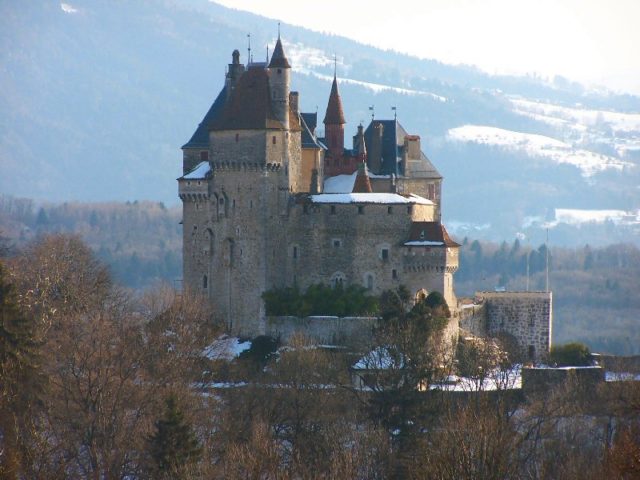
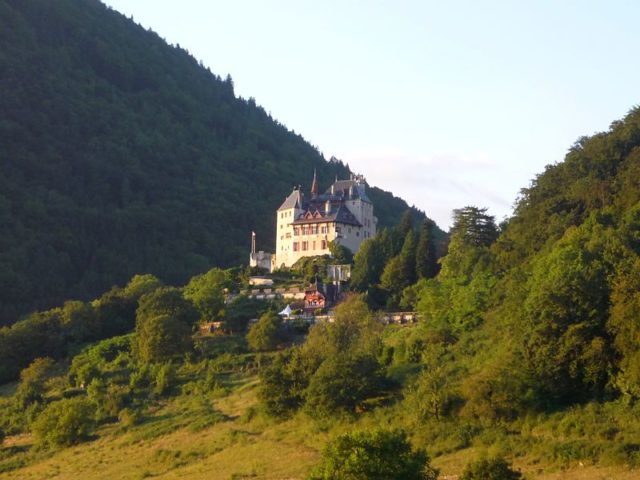
The latest additions to the chateau were made as late as 1880, when several new towers were added, creating the fairytale-like romantic façade that we see today.
One interesting fact about this place is that Walt Disney, who saw the castle when holidaying nearby, used it as inspiration for the castle in Sleeping Beauty’s!
https://www.youtube.com/watch?v=qPl7xeRlwpE
